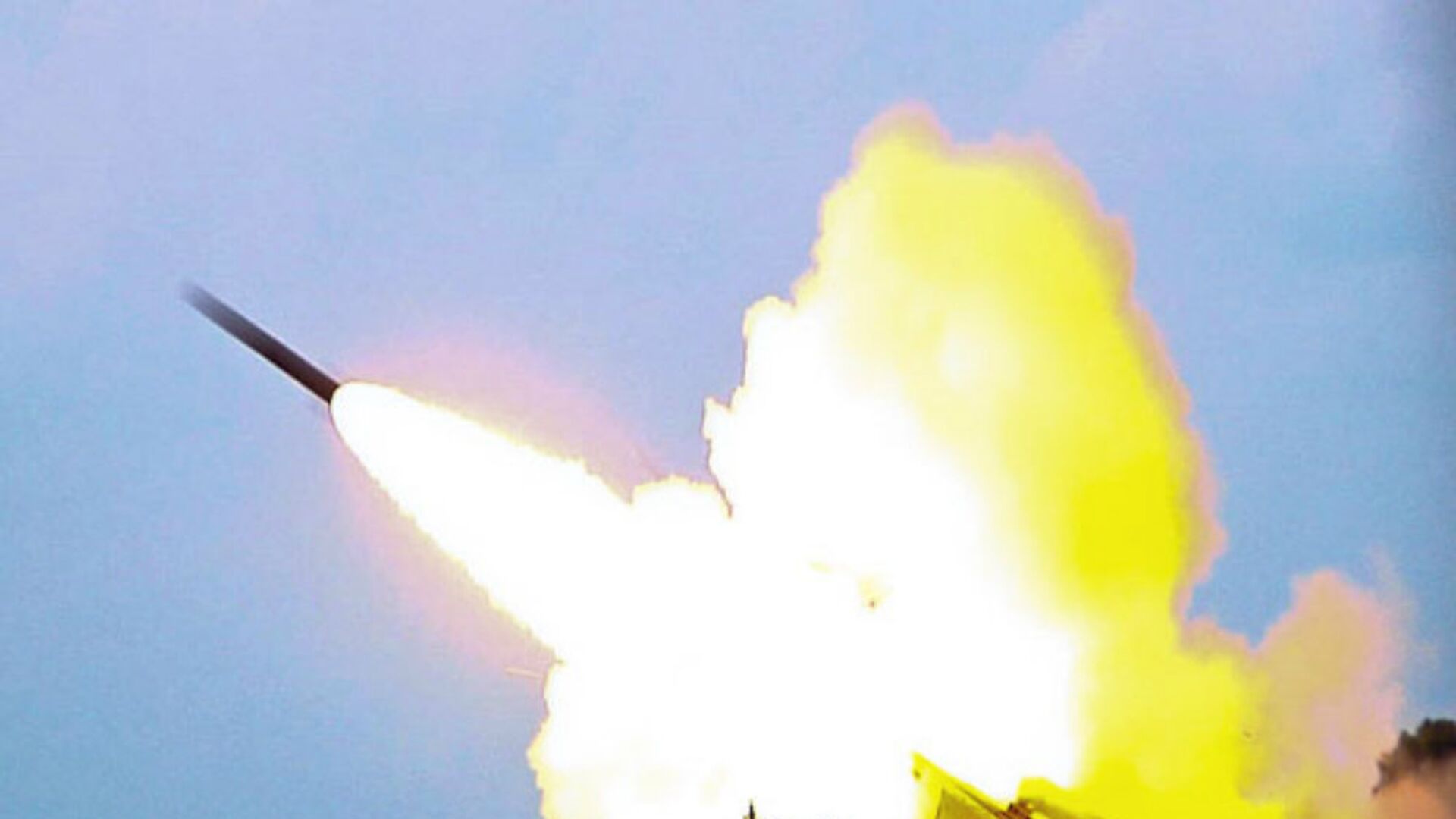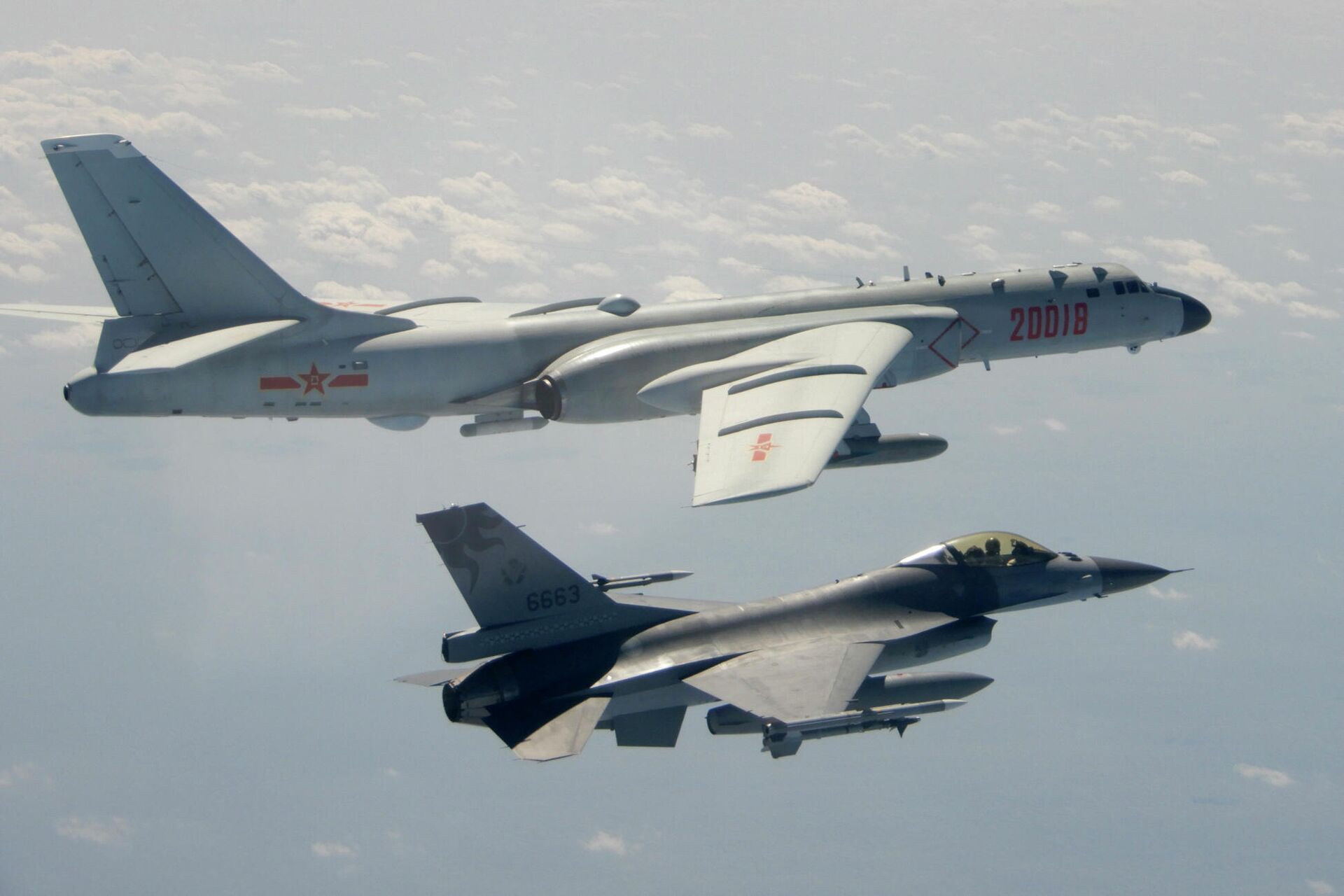US Senate Bill Would Give Taiwan $2 Billion in Annual Military Aid, Including Hypersonics
01:09 GMT 05.11.2021 (Updated: 12:43 GMT 19.06.2023)

© Flickr / Fort Bragg
Subscribe
A group of Republican senators have introduced a bill that would set aside $2 billion a year in military aid to Taiwan to ensure the autonomous island is able to stand up to the People’s Republic of China, which considers it a Chinese province in rebellion. The bill would violate a key agreement in US-China relations.
The Taiwan Deterrence Act was introduced in the Senate on Thursday by Sen. Jim Risch, (R-ID), the highest-ranking Republican in the Senate Foreign Relations Committee, and sponsored by Sens. Mike Crapo (R-ID), Bill Hagerty (R-TN), Mitt Romney (R-UT), John Cornyn (R-TX), and Marco Rubio (R-FL).
“China’s increasing efforts to militarily overwhelm Taiwan is a threat to international diplomacy and regional security,” Crapo said in a press release. “It is imperative to get asymmetric capabilities, training and readiness resources to Taiwan quickly so it can protect itself from China’s encroaching aggression in the Indo-Pacific region.”
The bill would require the US Department of State to set aside $2 billion in Foreign Military Finance grant assistance program annually from 2023 until 2032, provided Taipei commits to matching spending on a dollar-for-dollar basis.
The bill proposes that the US “design for export to Taiwan capabilities critical to maintaining a favorable military balance in the region, including long-range precision fires, air and missile defense systems, anti-ship cruise missiles, land attack cruise missiles, conventional hypersonic systems, intelligence, surveillance and reconnaissance capabilities, and command and control systems.”
It also says the State Department should urge the government in Taiwan to “invest in sufficient quantities of munitions to meet contingency requirements and avoid the need for accessing United States stocks in wartime” and to “cooperate with Taiwan to deliver such munitions, or when necessary, to increase the capacity of Taiwan to produce such munitions.”
However, the bill’s justifications make clear that the lawmakers see the defense of Taiwan as something not so much done for the benefit of the Taiwanese, but primarily to advance US strategic interests in the region, the foremost of which is to control and limit the continued expansion of Chinese political, military and economic power.

American Institute in Taiwan, the US' de facto embassy in Taipei
© Flickr / American Institute in Taiwan
“Taiwan is an important friend of the United States, and it plays a significant role in promoting democracy and countering China’s aggression in the Indo-Pacific,” Romney also said in the release. “This legislation would ensure that the United States continues to support Taiwan in its effort to counter Chinese aggression and coercion by bolstering our support of Taiwan’s defense capabilities.”
The Tightrope of US-Taiwan Relations
If it became law, the act would violate a key agreement at the foundation of US-China relations.
Formally calling itself the Republic of China, the government in Taiwan once ruled the entire country between 1912, when the last Chinese emperor abdicated the throne, and 1949, when the communist Red Army seized control of all of mainland China and founded the PRC in Beijing. However, despite the apparent communist victory, the US refused to switch its recognition of the Chinese government from Taipei to Beijing until the 1970s, and when it did so, three joint communiques underpinned that new relationship.
Called the Joint Communiques, the 1972, 1979, and 1982 agreements required Washington to give up its military and political support for the RoC in exchange for normalizing relations with the PRC. In the third communique, also called the August 17 ,1982, communique, the US declared “that it does not seek to carry out a long-term policy of arms sales to Taiwan,” and that it “intends to reduce gradually its sales of arms to Taiwan, leading over a period of time to a final resolution.”
Despite this, the US also passed the Taiwan Relations Act in 1979, laying out how it would keep an informal relationship with the government in Taipei that would support its continued autonomy, including via arms sales. The US government is compelled by the Foreign Relations Authorization Act to treat Taiwan as if it were a Major Non-NATO Ally when it comes to military aid. However, it makes those deals with the Taipei Economic and Cultural Representative Office (TECRO), the RoC’s unofficial liaison in Washington, DC, and not the governing authority in Taipei.
The PRC considers Taiwan an inalienable part of Chinese territory that is presently in rebellion. Ironically, the RoC agrees - but considers itself the rightful Chinese government. Beijing considers US aid to Taiwan to be meddling in its internal affairs and a gross violation of Chinese sovereignty.
Aside from the Clinton administration, during which a major crisis erupted in the Taiwan Strait that for a moment threatened open war, and a massive weapons transfer at the beginning of George W. Bush’s administration in 2001, US sales to Taiwan tended to remain somewhat small until Donald Trump became president in 2017.
Under Trump, whose rise to power was paralleled in Taipei by pro-secessionist President Tsai Ing-wen, the US grew increasingly close to Taiwan, with several visits by high-ranking administration officials and efforts to get Taiwan readmitted to international organizations ultimately provoking anger in Beijing.
According to a count by Sputnik, in the four years Trump was president, the US sold Taiwan some $18.3 billion in weaponry, ranging from torpedoes and cruise missiles to advanced F-16V “Viper” fighter jets. In 2020 alone, the US sold Taiwan more than $5.8 billion in weapons. Under Biden, those sales have continued.
Biden has sent mixed signals with regards to Taiwan. In a phone call last month with Chinese President Xi Jinping, Biden reportedly agreed not to change the One-China Policy; however, he also said last month that the US had a “commitment” to defend Taiwan and swore the US commitment to Taipei was “rock solid.”
Cross-Strait Tensions Mount
In 2018, the Trump administration laid out a new change in US global strategy, shifting its focus away from the War on Terror and toward what it called “great power competition” with Russia and China. Regarding Beijing as seeking to upend the postwar world order - what Washington calls the “rules-based international order” - in which the US and its allies reign supreme, the US began more intensely pressuring China across a variety of fields, including political, military, economic, and cultural spheres.
Sending US warships through the Taiwan Strait, an 80-mile-wide waterway separating Taiwan from the mainland, has become a regular feature of US policy. This provocative act deliberately flouts Chinese claims of sovereignty over Taiwan, as well as its claim that the strait constitutes its internal waters. The Chinese Foreign Ministry has said such acts send “wrong signals to ‘Taiwan independence’ separatist forces, and severely jeopardizes China-US relations and peace and stability across the Taiwan Strait.”
The US has also regularly conducted war drills in the seas on all sides of Taiwan, often including multiple aircraft carriers and strategic bombers.

In this Feb. 10, 2020, file photo and released by the Republic of China (ROC) Ministry of National Defense, a Taiwanese Air Force F-16 in foreground flies on the flank of a Chinese People's Liberation Army Air Force (PLAAF) H-6 bomber as it passes near Taiwan
© AP Photo / Republic of China (ROC) Ministry of National Defense
China has, in turn, mounted its own pressure campaign, regularly sending groups of aircraft and warships to conduct drills near the island which regularly enter Taiwan’s air defense identification zone (ADIZ), an ill-defined area inside of which the island’s military forces claim the right to identify and deter potential violators of its airspace. However, despite its representation in Western media, the ADIZ is not the same thing as airspace and has no bearing in international law, meaning the Chinese aircraft aren’t technically doing anything wrong.
The drills have nonetheless created an atmosphere of panic in which a Chinese invasion of Taiwan is held on the island and in the West as being near-imminent. They are explicitly referenced in the bill by the GOP senators. However, US Chairman of the Joint Chiefs of Staff Gen. Mark Milley said earlier this week that the Pentagon considers such an attack unlikely in the near future, and a Pentagon report to Congress delivered on Wednesday also said such an operation is unlikely before 2027 at the earliest.


